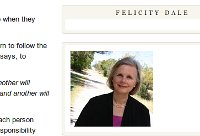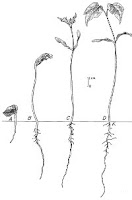Andrew Jones is a church planter and a blogger - his blog is called 'Tall Skinny Kiwi'.
In 2011 he wrote an article for Lausanne Global Conversation following his visit to some Asian churches.
It's well worth reading again even if you've already seen it. Andrew's article simply lists eleven practices that he considered to be at the root of the Asian believers' success.
The article is in two pages, make sure you don't miss the second page.
Here's his introduction.
I visited a number of Asian countries in 2011 and was amazed at the dynamism and commitment of the young Jesus followers.
One network, in a country that I will not mention, stuck out to me as an outstanding example. They have started almost a thousand new communities, many of them multiplying into the second and third generation. And like many new movements in the non-Western world, a Sunday worship service as an evangelistic entry point for potential members has not been part of their ministry portfolio.
So if they didn’t start worship services, how did they start a replicating movement of Christian communities and how do they maintain such a high level of spiritual growth?
Of course it’s hard and a little presumptuous to claim which elements of their ministry are the most important but . . . here are 11 practices that I think have contributed to their success:
Andrew then writes a little under each of the following headings - Bible study, open houses, fringe focus, simple habits, good business products, system for rehabilitation, native flavour, daily rhythms, not outreach to but outreach with others, something for the whole family, prayer.
Here's another taster, Andrew's sections on open houses and fringe focus.
The people were hospitable to visitors who seemed to come at any time of the day or night. Their houses were full of young people living there while their lives were being transformed. I did not see any buildings used for worship or church functions. Bible studies and events took place in the houses, with young people sitting on carpets and mattresses, but I would not classify it as a house church movement, since there was no regular worship service to invite neighbours into.
The primary influx was young people from the margins, the underbelly of society and those discarded by it, drug addicts, and postmodern sub-cultures rather than mainstream folk. I have seen this trend all over Asia including Japan. Most of the leaders I met had come from these backgrounds also.
There's a desperate need for change like this in other parts of the world. But perhaps there's just as much need for it here in Britain. Some people in the West are doing similar things, here in the UK and elsewhere, but so far perhaps especially in the USA.
Can we learn from this Asian approach? Is everything they do appropriate in the UK, just some of it, or none of it? Are there particular features Andrew describes that you might try in your own life with Jesus? Are you already doing some of these things? If not, why not? Could you engage in similar approaches with your friends? Could you reach your neighbours?
Leave a comment. Let's have a conversation.









